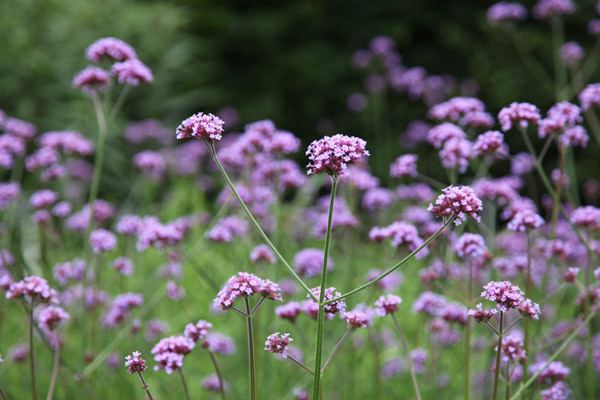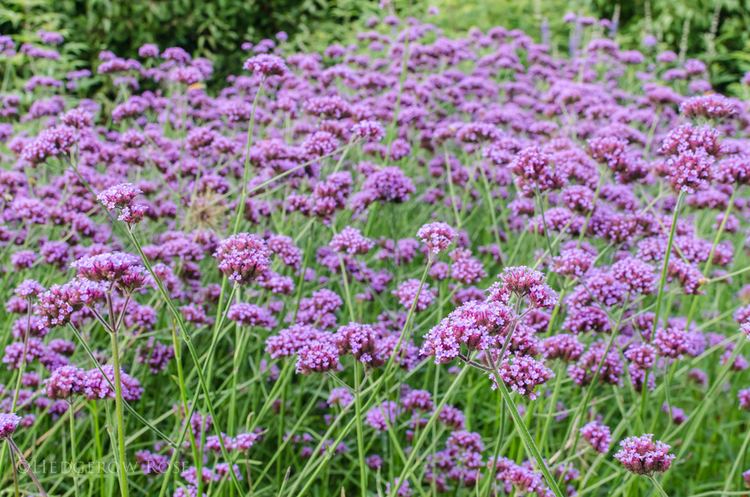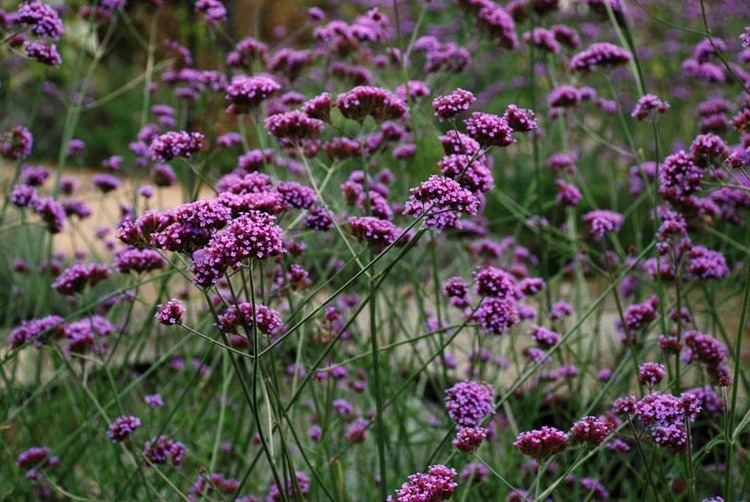Rank Species | Genus Verbena Higher classification Vervain | |
 | ||
Similar Vervain, Verbena officinalis, Russian sage, Needle grasses, Fountaingrasses | ||
Verbena bonariensis
Verbena bonariensis (purpletop vervain, clustertop vervain, Argentinian vervain , tall verbena, or pretty verbena) is a member of the verbena family cultivated as a flowering annual or herbaceous perennial plant. In USA horticulture, it is also known by the ambiguous names "purpletop" (also used for the grass Tridens flavus) and "South American vervain" (which can mean any of the numerous species in the genus Verbena occurring in that continent). For the misapplication "Brazilian verbena" see below.
Contents
- Verbena bonariensis
- Growing verbena bonariensis
- Description
- Taxonomy and systematics
- Cultivation
- Invasive species
- References

It is native to tropical South America where it grows throughout most of the warm regions, from Colombia and Brazil to Argentina and Chile.

Growing verbena bonariensis
Description
Verbena bonariensis is a tall and slender-stemmed perennial. It can grow to 6 ft (120 cm) tall and can spread to 3 ft (90 cm) wide. At maturity, it will develop a woody base. Fragrant lavender to rose-purple flowers are in tight clusters located on terminal and axillary stems, blooming from mid-summer until fall frost. The stem is square with very long internodes. Leaves are ovate to ovate-lanceolate with a toothed margin and grow up to 4 in (10 cm) long.
Taxonomy and systematics
Its specific epithet refers to Buenos Aires.
Verbena bonariensis is a member of the South American vervains, which are polyploid and have more than 14 chromosomes. Among these, it is part of a lineage which might also include Verbena intermedia and seems well distant from Verbena litoralis or Verbena montevidensis for example.

Sometimes, the name Verbena brasiliensis, Brazilian verbena or Brazilian vervain, is found for this species. However, this is the result of a mix-up with V. brasiliensis, the "true" Brazilian verbena, which has been erroneously referred to as V. bonariaensis by several botanists.
There are two named subspecies:
Cultivation
V. bonariensis is cultivated as an ornamental plant for traditional and drought tolerant and 'pollinator-host' gardens and parks.

It is a perennial, hardy in USDA Zones 7-11. It can be grown as an annual in areas where it is not winter hardy and will bloom in the first year when grown from seed. Its long internodes give it a sparse appearance but allow it to intermingle and coexist with other plants. The flowers which appear in mid- to late summer, are very attractive to butterflies, and provide nectar for native bees and many beneficial garden insects.

This species grows best in a well-drained soil. It prefers full sun to partial shade and needs regular moisture. It has a reputation of rarely being attacked by insect pests, but may be susceptible to powdery mildew. V. bonariensis is commonly grown from seed which germinates readily without pre-treatment, but can also be propagated from herbaceous stem cuttings.
It has gained the Royal Horticultural Society's Award of Garden Merit.
Invasive species
V. bonariensis self-seeds readily. This ability has raised concerns that it may become an invasive species and noxious weed in favorable habitats. It has naturalized in a number of southern United States.
Presently, the plant is on the invasive species watchlist for Washington state, naturalized in tropical and southern Africa, temperate Asia, Australia, New Zealand, the United States (including Hawaii), the West Indies, Macaronesia and the Mascarene Islands. According to Pacific Island Ecosystems at Risk, it is considered a weed in Fiji, New Guinea and other South Pacific islands.
